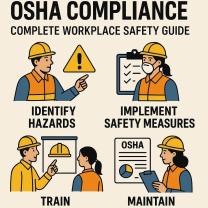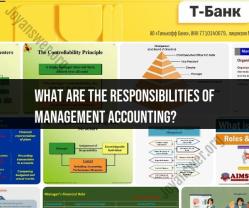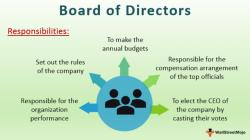What is a top manager?
A top manager, often referred to as a senior or executive manager, is a key leadership role within an organization. Top managers are responsible for making high-level decisions that shape the overall direction and strategy of the company. Their roles and responsibilities encompass a broad range of functions that contribute to the organization's success. The specific titles for top managers may vary, but common positions include Chief Executive Officer (CEO), Chief Operating Officer (COO), Chief Financial Officer (CFO), and Chief Information Officer (CIO), among others.
Roles and Responsibilities of Top Managers:
Setting Strategic Direction:
- Top managers are responsible for defining the organization's strategic goals and long-term direction. They play a crucial role in formulating plans that align with the company's mission and vision.
Decision-Making:
- Executives make critical decisions that impact the entire organization. These decisions may involve areas such as investments, mergers and acquisitions, organizational structure, and major business initiatives.
Leadership and Vision:
- Top managers provide leadership and a vision for the organization. They inspire and motivate teams to work towards common goals, fostering a positive and high-performance culture.
Resource Allocation:
- Executives allocate resources, including finances, personnel, and technology, to support the organization's priorities and strategic initiatives. They must prioritize investments to maximize returns.
Organizational Structure:
- Executives determine the organizational structure and hierarchy. They design systems that facilitate communication, collaboration, and efficient workflow within the organization.
Risk Management:
- Top managers assess and manage risks associated with the business. This includes identifying potential challenges, developing risk mitigation strategies, and ensuring compliance with regulations.
Financial Oversight:
- Executives, especially the CFO, are responsible for financial oversight. They ensure the financial health of the organization by managing budgets, financial reporting, and strategic financial planning.
External Relations:
- Top managers represent the organization externally, engaging with stakeholders such as investors, customers, regulators, and the media. They build relationships that contribute to the organization's reputation and success.
Innovation and Change Management:
- Executives drive innovation within the organization and oversee initiatives that promote adaptability to change. They must be forward-thinking and open to new ideas and technologies.
Performance Evaluation:
- Executives assess the performance of the organization against key metrics and goals. They implement performance management systems to track progress and identify areas for improvement.
Talent Development:
- Top managers are involved in talent management and development. They nurture leadership pipelines, identify high-potential individuals, and invest in professional development programs.
Communication:
- Executives communicate the organization's vision, goals, and expectations to employees at all levels. Effective communication is crucial for alignment and understanding of strategic objectives.
Crisis Management:
- In times of crisis, top managers take a leadership role in managing and resolving issues. They must make swift decisions to address challenges and mitigate potential damage.
Ethical Leadership:
- Executives set the tone for ethical behavior within the organization. They establish and uphold a culture of integrity, compliance, and ethical conduct.
Strategic Partnerships:
- Top managers identify and pursue strategic partnerships and collaborations that can enhance the organization's capabilities, market position, or competitive advantage.
Monitoring Industry Trends:
- Executives stay informed about industry trends, market dynamics, and emerging technologies. This knowledge is essential for making informed decisions and staying competitive.
The roles and responsibilities of top managers are diverse and demanding, requiring a combination of strategic thinking, leadership skills, and a deep understanding of the business environment. Successful top managers demonstrate the ability to navigate complex challenges, drive organizational success, and adapt to dynamic market conditions.
Navigating the Apex: Understanding the Role of Top Managers
Top managers stand at the pinnacle of the organizational hierarchy, wielding significant influence and responsibility. Let's explore their defining characteristics, diverse landscape, and crucial contributions:
1. Defining the Role:
Top managers, often referred to as C-suite executives, occupy the highest managerial positions. They steer the strategic direction of the organization, set overarching goals, and ensure smooth operation across all departments.
2. Title Variations:
While titles may vary across industries, common top-level positions include:
- Chief Executive Officer (CEO): Overall leader accountable for the organization's performance and success.
- Chief Operating Officer (COO): Oversees day-to-day operations and implements the CEO's vision.
- Chief Financial Officer (CFO): Manages finances, budgets, and investments.
- Chief Marketing Officer (CMO): Leads marketing and branding strategies.
- Chief Information Officer (CIO): Responsible for technology infrastructure and systems.
3. Scope of Responsibilities:
Top managers' responsibilities differ from lower-level managers in scope and focus:
- Strategic Thinking: Focus on long-term vision, setting goals, and formulating strategies for growth and competitive advantage.
- External Relations: Represent the organization externally, building partnerships, managing finances, and navigating regulations.
- Decision-Making: Make impactful decisions that affect the entire organization and its future.
- Delegation and Leadership: Delegate tasks effectively to middle and lower-level managers and inspire a high-performing culture.
- Performance Management: Monitor and evaluate the organization's overall performance and make adjustments as needed.
4. Essential Skills and Qualities:
- Strategic Vision: Ability to envision the future, set ambitious goals, and navigate complex environments.
- Leadership and Communication: Inspire and motivate teams, communicate effectively at all levels, and build strong relationships.
- Decision-Making and Risk Management: Make sound decisions under pressure and manage risks effectively.
- Financial Acumen: Understand financial principles, analyze data, and make informed financial decisions.
- Adaptability and Resilience: Navigate change effectively and adapt to evolving market conditions.
- Delegation and Resource Management: Allocate tasks and resources efficiently to optimize performance.
5. Shaping Culture and Direction:
Top managers play a crucial role in shaping the organization's culture and direction:
- Vision and Values: Define the organization's core values, mission, and vision, shaping its ethical and cultural framework.
- Decision-Making: Their decisions set the company's strategic direction, impacting everything from employee morale to marketing campaigns.
- Leadership Style: Their leadership style sets the tone for the entire organization, influencing how employees interact and perform.
- External Representation: They represent the organization to the outside world, shaping its public image and reputation.
Remember:
The role of a top manager is demanding and wymagający, requiring a unique blend of skills, vision, and leadership. Understanding their responsibilities, diverse titles, and impact on the organization can help you appreciate their crucial role in driving success.
Whether you aspire to reach the C-suite or simply want to understand the leadership dynamics within an organization, exploring the world of top managers offers valuable insights into the inner workings of successful enterprises.













